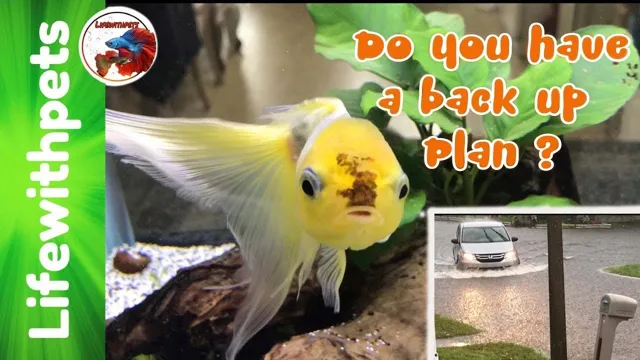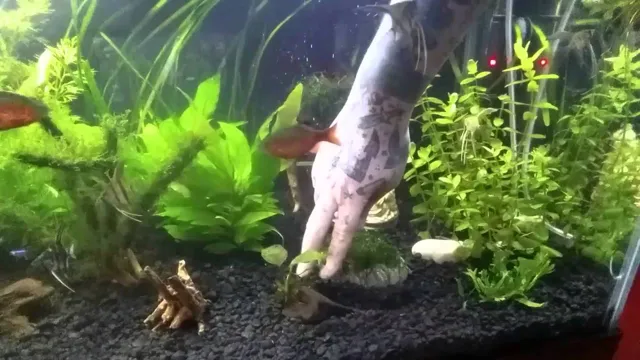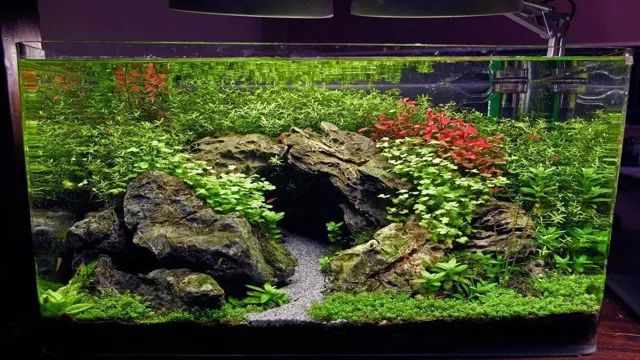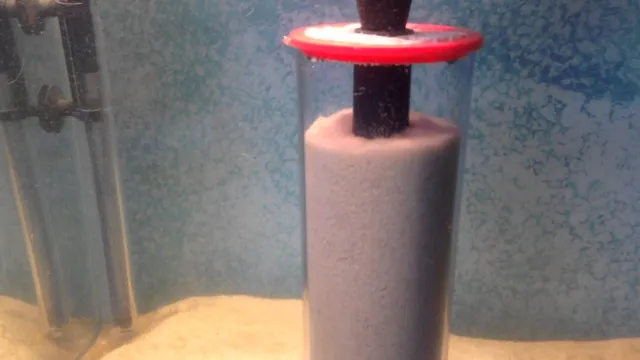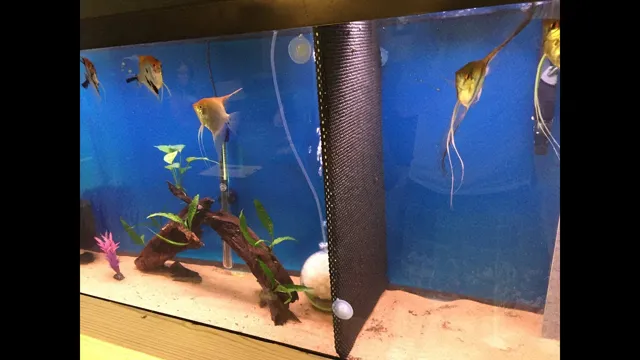Are you ready to create a world under the water? A turtle aquarium can provide a unique and fascinating glimpse into the life of these captivating creatures. Not only is it an enjoyable hobby, but it is also an excellent way to learn more about turtles and their habitats. Whether you are a beginner or a seasoned pro, building a turtle aquarium can be both an exciting and rewarding experience.
With the right knowledge and tools, you can create a safe environment for your turtles to thrive in. In this blog, we will guide you through the process of setting up your turtle aquarium from start to finish, including everything you need to know about equipment, decoration, and maintenance. Let’s dive in!
Choosing the Right Tank
When setting up an aquarium for your pet turtle, one of the most crucial aspects to consider is choosing the right tank. You want to ensure that the size of the tank is appropriate for the size of your turtle and that it provides adequate space for swimming, basking, and hiding. A good rule of thumb is to have at least 10 gallons of water per inch of shell length for your turtle.
It is also important to choose a tank that is sturdy and well-made, with a secure lid to prevent any escapes. Glass tanks are a common choice for turtle aquariums, as they are easy to clean and maintain. Additionally, acrylic tanks are a good option because they are more lightweight and durable than glass, making them less likely to shatter.
Whatever tank you choose, make sure to provide appropriate lighting and filtration to maintain a healthy environment for your pet turtle. With the right tank, you can create a comfortable home for your beloved turtle to enjoy for years to come.
Size and Material
When it comes to choosing the right tank, the size and material are two critical factors to consider. The tank’s size will depend on your household’s water consumption, and choosing the right material is essential to ensure long-lasting durability and water quality. For example, if you live in an area with hard water, choosing a tank made of corrosion-resistant materials like stainless steel may be ideal.
Additionally, steel tanks are less likely to crack or leak than plastic ones, making them a more reliable option in the long run. However, if you’re more concerned about the cost, plastic tanks may be a better option as they are cheaper than steel tanks. Ultimately, the size and material of the tank should be chosen based on your individual household’s needs and budget.
When considering the right tank, be sure to think about the size of your family, your water consumption, and your budget, and you’ll be well on your way to choosing the best tank for your home.
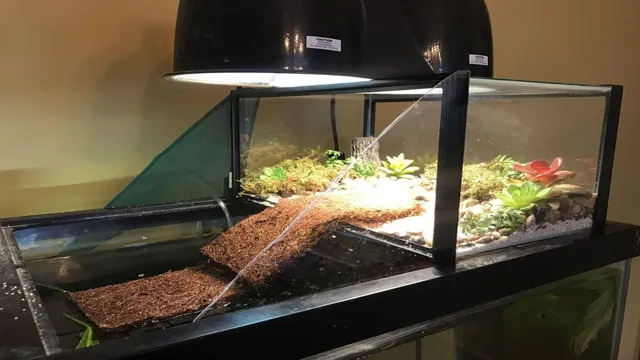
Accessories
When choosing the right tank for your accessories, it’s important to consider several factors. First and foremost, think about what you will be using the tank for. Will it be for casual wear or for workouts? Next, consider the material of the tank.
Do you prefer cotton or a moisture-wicking material? Additionally, think about the fit of the tank. Do you want it to be fitted or loose? Lastly, don’t forget to consider the style of the tank. Is there a particular color or design that catches your eye? With all of these factors in mind, you can confidently choose the right tank to go with your accessories, whether it’s a statement necklace or a new pair of leggings.
Remember, your tank is not just an afterthought, it’s an important part of your outfit that adds both functionality and style. So, take your time and choose wisely to really elevate your accessory game. (See Also: How to Clean Gravel Rocks in Dana Aquarium: A Step-by-Step Guide)
Setting Up the Environment
If you are looking to create a turtle aquarium, it is important to set up the environment properly to ensure the health and happiness of your shelled friends. The first step is choosing the right tank size and shape, depending on the type and number of turtles you plan on housing. A filtration system is crucial to maintain water quality, and a heater and thermometer are necessary to keep the temperature stable.
Aquatic plants and rocks can be added for decoration, but make sure they are safe for turtles and do not pose a hazard to their health. It is also important to cycle the tank for several weeks before adding your turtles, as this helps establish beneficial bacteria needed for a healthy ecosystem. Once the environment is properly set up and your turtles have been introduced, regular maintenance such as water changes and filter cleanings will keep the aquarium clean and thriving.
By following these steps, you can create a safe and enjoyable home for your turtle pets.
Filtration and Heating
When it comes to setting up a healthy and comfortable environment for your fish, filtration and heating are two of the most important factors to consider. Filtration helps maintain the water quality by removing waste and other harmful elements while allowing beneficial bacteria to grow. There are different types of filtration systems available, including canister filters, hang-on-back filters, and sponge filters, each with its own advantages and disadvantages.
It’s essential to choose a filter that’s suitable for your aquarium size and fish needs. On the other hand, heating the water ensures that the temperature remains stable, which is crucial for your fish’s health and wellbeing. Generally, most freshwater fish prefer a temperature range of 72-82°F, while tropical fish require 75-80°F.
Using a reliable aquarium heater and thermometer will help you monitor and maintain the correct temperature range. Remember, the quality of the water and temperature are critical factors that can affect the health and happiness of your aquatic pets, so make sure to invest in quality filtration and heating equipment.
Lighting and Substrate
When creating a reptile habitat, it is important to consider both lighting and substrate. Lighting is essential for the reptile’s wellbeing as it mimics the sun’s natural light and heat. UVB lighting is crucial for reptiles as it helps them produce vitamin D3, which is essential for their immune system and overall health.
Different reptiles require different levels of UVB lighting, so it’s important to research what your specific reptile needs. In terms of substrate, it’s essential to choose a material that is safe for your reptile and provides a natural environment. Options include coconut husk, sand, and reptile carpet.
However, be sure to avoid materials such as cedar or pine, as they can cause respiratory problems for your reptile. Ultimately, creating a comfortable and safe environment for your reptile will ensure their health and happiness.
Decorations and Plants
When it comes to setting up your environment, decorations and plants play a crucial role in creating a calming and inviting space. Adding decorations such as paintings, wall hangings, and soft lighting can help to create ambiance and set the tone of the room. Additionally, incorporating plants can bring life and color to the space while also helping to purify the air.
Plants like spider plants and snake plants are low maintenance and thrive in low light settings, making them the perfect addition to any room. By strategically placing decorations and plants, you can create a cozy atmosphere that promotes relaxation and calmness, allowing you to fully enjoy your space. So why not add a pop of color and an element of tranquility to your environment today? (See Also: How to Make an Aquarium in a Coffee Carafe: A Step-by-Step Guide)
Adding the Turtle
If you’re interested in creating a turtle aquarium, one of the most exciting things you can do is to add a turtle to your tank. Turtles are fascinating creatures that are relatively easy to care for and can provide years of enjoyment and entertainment. But before you add a turtle to your aquarium, there are a few things you need to consider.
First, you need to make sure that your tank is large enough to accommodate your new pet. You should also ensure that the water quality is ideal for your turtle, with appropriate filtration, heating, and lighting. Once you’ve taken care of these basic requirements, you can start adding plants, rocks, and other decorations to create a comfortable and stimulating environment for your turtle.
And once your turtle is settled in, you can start enjoying all the benefits of having a beautiful and fascinating aquatic pet. So if you’re looking to make a turtle aquarium, don’t be afraid to take the plunge and add a turtle to your tank today!
Acclimating the Turtle
When introducing a new turtle to your home, it’s essential to give them time to acclimate to their new environment. Start by placing your turtle in their new enclosure and providing them with a heat lamp, water dish, and substrate. Be sure to monitor their behavior closely during the first few days to ensure they are adjusting well.
It’s also crucial to maintain the proper temperature and humidity levels to create a comfortable living space for your new pet. Once your turtle has settled in, you can start slowly introducing them to their diet and toys to keep them healthy and entertained. By taking the time to acclimate your turtle correctly, you’ll ensure that they have a safe, comfortable, and happy home for years to come.
Feeding and Maintenance
If you’re considering adding a turtle to your home aquarium, there are a few things you’ll need to know to ensure they are well-fed and maintained. First and foremost, turtles need a carefully balanced diet that consists of equal parts veggies and protein. You can opt for pre-made turtle pellets, but it’s also important to offer fresh veggies like kale, collards, and carrots.
It’s also recommended to offer some form of protein like cooked, unseasoned chicken or fish once or twice a week. Along with feeding, maintenance is also key. Turtles require a clean environment with a filter and heat lamp to regulate their body temperature.
It’s also important to change their water regularly to prevent any harmful bacteria from growing. Proper feeding and maintenance will ensure that your new turtle is happy and healthy in their new home.
Conclusion
In the end, making a turtle aquarium is more than just acquiring a fancy tank and some cute little reptiles. It’s about creating a home for these fascinating creatures that reflects their natural habitat and provides them with a safe and stimulating environment. With a bit of research, preparation, and creativity, you can design a turtle aquarium that’s not only functional but also aesthetically pleasing and enjoyable to watch.
So grab your tools and dive in – your shelled friends will thank you for it!” (See Also: How Often to Vacuum Aquarium Sand: A Complete Guide for Clean and Healthy Water)
FAQs
What is the ideal turtle aquarium size?
A turtle aquarium should be at least 10 gallons per inch of the turtle’s shell length. For example, a 6-inch turtle should have a aquarium of at least 60 gallons.
How do I set up an aquarium for turtles?
To set up an aquarium for turtles, first choose an aquarium that is the appropriate size. Add a water filter, heater, and basking area. Fill the aquarium with dechlorinated water and set the temperature to 75-80°F.
Can turtles live in a fish tank?
Yes, turtles can live in a fish tank as long as the tank is large enough and has the appropriate equipment such as a filter, heater, and basking area.
What should I feed my turtle?
Turtles should be fed a balanced diet of commercial turtle pellets, fresh leafy greens, and occasional protein sources such as insects or cooked chicken.
How often should I clean my turtle’s aquarium?
You should clean your turtle’s aquarium at least once a week by removing any uneaten food and debris, doing a partial water change, and scrubbing the sides of the tank.
Can I keep different species of turtles together in one aquarium?
It is not recommended to keep different species of turtles together in one aquarium as they may carry different diseases and have different care requirements.
How can I tell if my turtle is healthy?
A healthy turtle should have clear eyes, a smooth and unblemished shell, and eat regularly. If your turtle is showing signs of lethargy, appetite loss, or abnormal behavior, it may be sick and should be seen by a veterinarian.


